
VOLUME 2 NUMBER 4
JUNE 1967
Publication approved by the Chief of Air Staff.
JUNE 1967
Publication approved by the Chief of Air Staff.
EDITOR Sqn. Ldr. Woodward.
DESIGN Flt. Lt. Cockle, F/Sgt. Hobbs.
Illustration processing by New Sarum Photographic Section.
DESIGN Flt. Lt. Cockle, F/Sgt. Hobbs.
Illustration processing by New Sarum Photographic Section.
The opinions expressed in NDEGE are the personal views of
contributing writers they do not necessarily reflect official RRAF
opinion. Unless otherwise stated, contents should not be construed
as regulations, orders or instructions.
Contributions are welcome, as are comment and criticism. The Editor
reserves the right to make changes which he believes will improve
the material without altering the intended meaning.
All correspondence should be addressed to the Editor, NDEGE, H.Q.
RRAF. P.B. 721 Causeway, Salisbury.
NDEGE is published in the interests of Flight Safety by and for personnel of the ROYAL RHODESIAN AIR FORCE.
INSIDE NDEGE - JUNE 1967
Ndegeditorial
Bloggs
Spotlight on the Sections (l)
Smoke Gets in Your Eyes
Bio Rhythm ?
The DC 3
It's a Shocking World
Eat Drink and be Ready
Flight of the Bumblebys
Bloggs
They ..... They .....They
Road Safety
Stop Press
Corinne
Cover: A photograph taken from a Canberra at 45,000 ft, showing Lake Mcllwaine and part of the Great Dyke.
See "Spotlight on the Sections"
Ndegeditorial
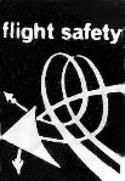
This issue of NDEGE appears after a regrettably long break in the series. Your editor tenders his sincere apologies and hopes to be able to provide you with an issue every four months in future.
An emotional black day sees us edgy and nervous. Normally cheerful women become peevish, easy-going men become short-tempered.
In this respect, your contributions will be most welcome. These can
be articles, stories, cartoons or merely downright critical letters!
On the primary subject of FLIGHT SAFETY we can say that our present
awareness of safety matters is beginning, to show signs of slipping
from what has been a basically satisfactory standard.
Suddenly we are beginning to see servicing errors appearing on our
record sheets................ three cases already this year.
Concern is being felt that our present level of supervision is sliding; checks are inadequate, or missing, or ...??? ?
Now, more than ever before, our situation demands meticulous
devotion to professional standards. And this applies to everybody.
If you are a supervisor It's your job to check someone else's
actions... ........... that check is no less important than the
action itself.
If you are aircrew you're in an excellent position to assist your
commander. and maintenance supervisors in correcting inefficient or
unsafe- practices on the flight line.
But please remember that SAFETY is never an end in itself;
always the object is to get the job or mission accomplished in the
most effective manner possible. It's a SAFETY job to find the
WAY to do that.
Effect of Controls
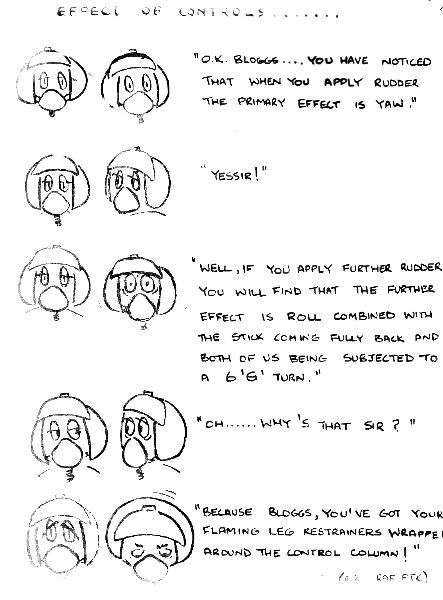
SPOTLIGHT ON THE SECTIONS
No. 1: the photographers.
1. The first RRAF Photographic Section was established at
Cranborne in 1950, and was housed in a single large room next to the
aircrew living quarters,
Condition's were primitive to say the least; the nearest running
water was from an outside tap some thirty yards from the section,
and was collected in buckets. The whole section was converted into a
darkroom by turning off the light; but it is not dark for long since
visibility soon returned via diffused lighting from the many cracks
in the ceiling and window frames. It was, in fact, ideally suited to
photographers afraid of the dark.
2, In spite of the problems, many square miles of photo cover was
flown and supplied to various government departments, using the
Harvard and Rapide aircraft, Processing air film 165 feet in length
and 9½ inches wide was quite an adventure; after posting a large
"Keep Out" sign on the door, the film was hurried through the
developing process before it became affected by the extraneous
lighting. Final film washing was carried out under the hydrant
behind the Fire Section before returning to the darkroom, where it
was placed on the huge drying drum, five feet in diameter and eight
feet long, which occupied a large percentage of the floor space.
Other activities included production of cine gun training films,
defect report photography, Boards of Inquiry photos, and pictures
for Service history and publicity display.
3. The section moved to New 3arum during 1952 and took up residence
in its present quarters. In 1955, the Rapide gave way to
newly-converted Dakota
4. In 1957, a second section was established at Tharnhill to satisfy
the demands for technical photography at that Station, and to
provide facilities, for all other gun training and assessment. In
1961 the first trials using the Canberra fear high-altitude aerial
survey and photo reconnaissance were successfully carried out at Thornhill.
5. With the arrival of No, 5 Squadron at New Sarum, and the
formation of a full-time photo interpretation section, the
production of air photography has been stepped up. It is anticipated
that by the end of this year about 130,000 square miles of survey
cover will have been completed for Government survey needs alone,
and a considerable amount for training and other Air Force purposes.
Cameras used have interchangeable lenses varying from a 6 inch
wide-angle lens capable of photographing, at 50,000 feet, 200 square
miles of territory on a single negative, to a 36 inch telephoto lens
used to obtain detailed reconnaissance information. In addition to
these fixed camera installations, hand-held cameras are employed in
Provosts and Alouettes for oblique target photography and low-level
reconnaissance.
6. The service photographer has always laid claim to one of the most
interesting and absorbing jobs in the Force. He may be called upon
to provide aerial or ground photographs of an infinite variety of
tasks from document reproduction and identity pictures to a minute
fracture of a pipe located la an inaccessible part of an aircraft,
or, on those all-too-rare occasions, to provide pin-up shots for
Ndege. He must have an intimate knowledge of photographic theory
embracing both optics and chemistry, and the thorough understanding
of at least half a dozen air cameras. He must be part artist and
part technician in a profession which, being essentially creative,
can pose a new problem every day requiring imagination and skill.
Aerial Photography
Whilst it is generally known that modern map-making techniques
involve the use of air photographs, it is not fully appreciated that
the RRAF has the task of photographing Rhodesia for mapping
purposes. A considerable percentage of the country* s topographical
mapping is based on out-dated information originally gathered by
field survey parties, and the Government Survey Department is
constantly revising all such mapping.
2. Liaison between Surveys and HQ RRAF results in photographic
requirements being channelled, in the form of Air Tasks, to the
Photo Flight of No, 5 Squadron, The task is then flown with a
Canberra equipped with a fixed vertical survey camera which is
remotely controlled from the bomb aimers position. The camera is
electrically driven, and is "triggered" at a regular time interval
determined by an intervalometer under the control of the
photo-navigator.|
3. The area to be photographed is divided into "flight lines" along
which the aircraft tracks, taking a continuous strip of photographs
at a time interval so calculated that the area of ground covered by
each photograph overlaps the area cover of the proceeding one by
60%. Similarly, the flight lines are constructed so that adjacent
strips of photographs overlap by 30%
This overlapping system is designed to ensure that all ground detail
is covered on at least two photographs (providing stereoscopic
cover, which is the basic requirement for mapping), and also to
ensure that minor navigational errors do not result in gaps.
After the film is flown, it is processed and examined in the
negative stage for defects, analysed for accuracy and overall cover,
titled and numbered. A "cover trace" is then produced from an
existing map of the area, showing the actual tracks of the aircraft
with the appropriate negative numbers and all the details of crew,
height, scale, camera operation, etc., applicable to the flight. The
film is then despatched to Surveys for the production of maps.
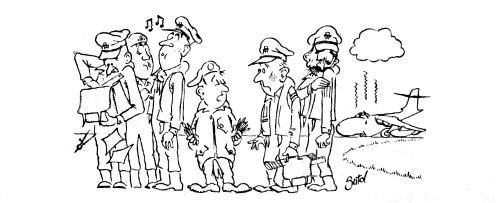
Pencil in the cockpit? Certainly sir - what Colour
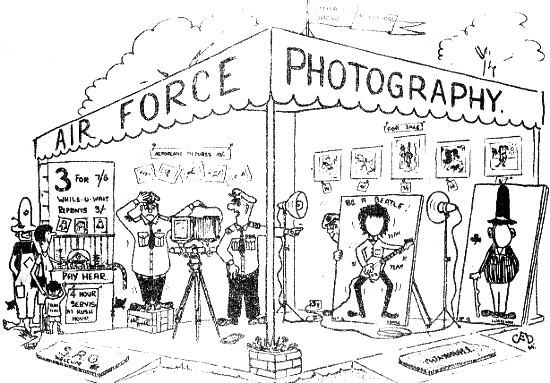
"When I authorised an Air Force Photographic Stand, this is NOT what I had in mind.
I

Remember when you work with munitions jou are handling items which are designed to KILL people.
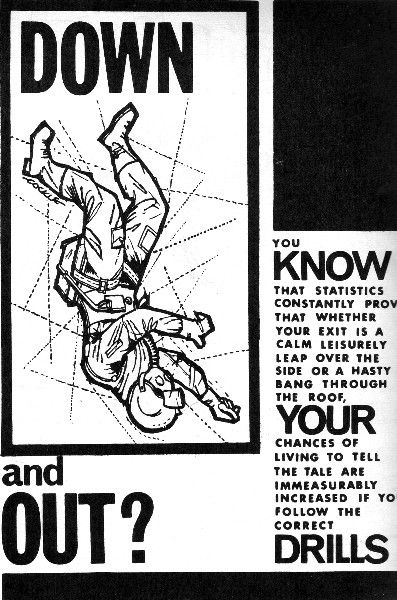
DOWN AND OUT
YOU KNOW THAT STATISTICS CONSTANTLY PROVE
THAT WHETHER YOUR EXIT IS A CALM LEISURELY
LEAP OVER THE SIDE OR A HASTY BANG THROUGH
THE ROOF,
YOUR CHANCES OF LIVING TO TELL THE TALE ARE
IMMEASURABLY INCREASED IF YOU FOLLOW THE
CORRECT DRILLS
KNOWLEDGE, CARE and CAUTION are essential parts of your life insurance?

Smoke Gets In Your Eyes
The AVERAGE cigarette burns about 5 minutes. During such a 5-minute
period, a cigarette can contribute significantly to a potential
accident.
First, cigarettes interfere with vision - not much, but some. One
effect of nicotine in the body is that it constricts the smell blood
vessels, including those which supply the eyes. The result is a
measureable loss of acuity. In other words, you can't see quite as
well after a smoke. With flying as tough as it is today, this fact
should give you pause. This doesn't mean smokers can't see well
enough to fly safely. It means that they don't see as well as they would otherwise.
Second, cigarettes cloud up our windshield windows. Tobacco smoke
contains on assortment of tarrs and resins which have become the
centre of research and argument concerning their possible roles as
causes of cancer. While I cannot confirm nor deny this accusation, I
do know that these tars collect on window surfaces to obscure
vision.
If tobacco doesn't get you by causing cancer, it may do the job by
causing an accident. But, unlike cancer, this hazard can be readily
wiped away. Periodically cleaning windows with a paper towel will
clear up your vision to a significant degree. Proper cockpit
ventilation will clear the smoky air and keep your aircraft from
looking like the smoker on the Super Chief.
Another effect of smoking is the quantity of carbon monoxide and
carbon dioxide gases which are thrown off. These gases are insidious
in that they can be accrued in the body over a prolonged exposure.
They make one somewhat drowsy and inattentive, and they fuzz up
vision.
Tobacco smoke contains the same gases as the exhaust of your
aircraft, and you've learned to respect the toxic effect of that
hazard. Continuous smoking in a tightly closed and non-ventilated
aircraft is very much like a hole in the exhaust system, continually
leaking a tiny quantity of the gas into the cockpit to contaminate
the air you breathe.
Breathing your smoke once is bad enough. Don't try to live in it
Ventilate!
Another danger of smoking is its distractive side effects. When the
hot ash drops off into your lap, it is apt to take your attention
from flying. A burning cigarette dropped in the aircraft makes
things interesting - particularly if you sit on it or if it can't be
found.
One of the most important hazards related to smoking is fire. Most
smokers forget that "where there's smoke, there's fire."
Smoking may have its good points. But it interferes with your
vision, it clouds your windows, it gives off toxic gases, and it's a
constant fire hazard.
Ack: Donald S. Buck
US ARMY
BIO RHYTHM .... ?
This Rhythm guides your destiny.
The car is parked in the High Street. You come out of the shop, head
down, maybe bumping into somebody, and get in.
A cursory glance in the mirror, you slam the gear lever into reverse
and - crunch! You've tangled with the car behind. It's one of those
days!
But a week later and - wow! You're on top of the world! You drive
like Moss, you don't bump people on the pavement. You feel fit,
optimistic, energetic.
Between these two extremes, you have a run of rather ordinary days.
Is this you? Whether you know it or not, it is. You have "up" days
and "down" days.
This has been knorn to scientists for hundreds of years. But only
now are they finding the key.
The newly developed science called biorhythm claims it is possible
for anybody to chart his emotional life, to tell with accuracy on
which days he will be on top of the world, with all senses acute,
and on which days depressed, careless, accident-prone.
Serious research into biorhythm began in 1927, when a team charted
accidents to men in the repair shop of an American railway.
Low Periods
They found that every man had low periods, spaced eleven days apart,
when four out of every five of his accidents occurred.
Other scientists, impressed by the results, conducted experiments of
their own.
One doctor found that his patients suffered a twenty-three-day
cycle, with critical days at the beginning, middle and end.
A Berlin biologist claimed that his experiments showed we each have
a twenty-eight-day emotional curve.
A doctor of Innsbruck University, in Austria, analysed the case
histories of more than two thousand students and said that we have
an intelligence cycle of thirty-three days.
All these three men were correct, as we shall see. They made the
study of biorhythm respectable.
In Switzerland, more than half a million people accept the principle
and plan their lives accordingly.
Train drivers on the Swiss Federal Railways step down from the
footplate if they are in an unfavourable biorhythmic day.
Many Swissair pilots see to it privately that if they are in a
dangerous period their co-pilots are going through a "high"
biorhythmic time.
A Computer
And ninety Swiss businesses have incorporated biorhythm into their
personnel management.
Swiss Watchmakers have even produced a pocket-sized biorhythm
computer, called a Biorit, which, by using a series of glared dials,
indicates whether your day with be a "high" or "low" one.
The biorhythm believers say it is only necessary to know your birth
date to figure out your "patterns". For the pattern is set at birth
and never alters.
Everyone is affected by the same three cycles.
Our physical curve lies a twenty-three day cycle and determines our
strength, endurance, energy and resistance.
Our emotional curve runs on a twenty-eight-day cycle and controls
intuition, perception and creative ability.
Our intellectual curve lies a thirty-three-day cycle and affects our
memory, reasoning power and logic.
Each cycle can be shown in the shape of a horizontal "S". The curve
extends above and below e centre line.
The curve above the line depicts the "high" of each trait. The below
the line is a time of recuperation.
But the critical period is the transition time. Whenever any one curve crosses the centre line in either direction, you are in a dangerous period.
On a physical "black day", the biorhythm scientists you will tend to
misjudge direction and distance, stumble, fall or injure yourself.
They claim to have shown that the odds of a car driver having an
accident are fifteen times grafter on these days.
During an intelligence off-day, problems appear overwhelming an!
decisions impossible to reach.
Of course, biorhythm has its critics. One eminent medical man says:
"There are changes in our emotional life at regular intervals. But
although this phenomena has been under investigation for many years
I do not think the biorhythm supporters have the answer. I do not
believe that definite conclusions can be drown from any of the
results of experiments held so far."
Other medical experts are less conservative. Several hospitals on the Continent have already recognised the- significance of biorhythm.
Significance
Except in emergencies, they schedule operations to coincide with the
"up" periods on their patients' biorhythm charts.
And the surgeons, too, will time their work for their own "good
days", thus minimising the chances of accidents, nerves or bad
judgment.
George Thommen, who markets the Biorit computer in America, has
bulging files of documentary evidence to support the biorhythm
theory.
One man was asked to list his accidents and blunders over a long
period. Thommen showed that four out of every five occurred in a
critical biorhythmic time.
Actor Kartyn Green caught his leg between a lift and the lift-
shaft. It had to be amputated. Verdict: Physically critical day.
Actress Diana Barrymore died from an overdose of sleeping tablets.
Verdict: Physical and intellectual curves both at most critical
points.
Boxer Ingemar Johansson was heavily fancied to keep his world
heavyweight title against Floyd Patterson in New York, Thommen
discovered that June 20, fight day, was a black one for Johansson
and said so. He was scorned. In the fifth round, Patterson won.
Verdict: Physically and emotionally critical day far Johansson,
Biorhythm enthusiasts say that one day all of us will plan our lives
according to our biorhythmic patters.
You might scoff at the idea today. But perhap that's because today
is one of your black days?
CAUTION
Aviators who are SCUBA divers are cautioned that it is hazardous to
fly at altitude soon after diving. Decompression symptoms are likely
to occur during transition from pressures above one atmosphere to
pressures below one atmos- here. It is recommended that aviators not
fly above 5,000 feet altitude within 24 hours of diving to depths
below 30 feet (plus 1 atmosphere), or within 12 hours of diving to
depths below 15 feet.
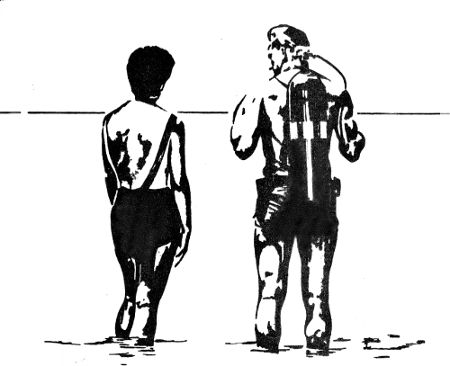
THE DC 3
In '51 they tried to ground the noble DC-3,
And so some lawyers brought the case before the CAB,
The Board examined all the facts behind their great oak portal
and then pronounced these simple words, "Thr Gooney Bird's
immortal"
THEY PATCH HER UP WITH MASKING TAPE,
WITH PAPER CLIPS AND STRING-S,
AND STILL SIIE FLIPS, SHE NEVER DIES -
METHUSELAH WITH WINGS.
The Army toast their Skytrain now in lousy scotch and soda,
The Tommies raise their tankards high to cheer the old Dakota,
Some claim the C.47's best, or the gallant R4D,
Forget the claim, they're all the same, the noble DC-3
Douglas built the ship to last, but nobody expected
The crazy heap would fly and fly no matter how they wrecked it.
While nations fall and men retire and jets get obsolete,
Thee Gooney Bird flies on and on, at 11,000 feet.
No matter what they do to her, the Gooney Bird still flies,
One crippled plane was fitted with aie wing half the size,
She hunched her shoulders, then took off and, I know this makes us laugh
One wing askew, and yet she flew - the DC-2½.
She has her faults, but after all, who's perfect in this sphere?
Her heating system was a gem, we loved her for her gear,
Of course, her winders leaked a bit Then rain came pouring down,
She'd keep you warm, but in a storm it's possible you'd drown.
Well now she flies the feeder routes and carries mail freight,
She's just an airborne office or a flying twelve-ton crate,
They patch her up with masking tape, with paper clips ind strips,
and still she flies, she never dies - Methuselah with Wings.
BRAKE NOT BREAK
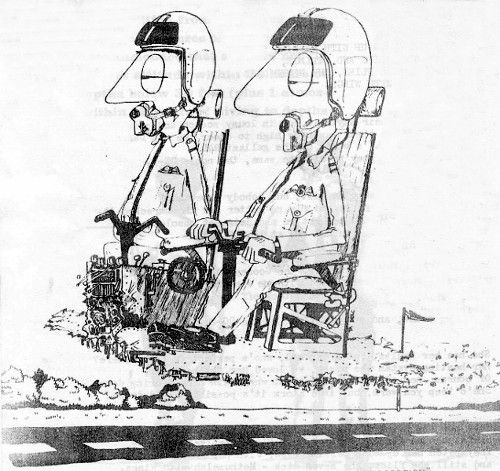
"I SAID WE'D BE ABLE TO TURN' AT THE FIRST INTERSECTION
Ack: RAF TC

IT'S A SHOCKING WORLD
Electricity - just what is it ? Since the old conventional theories
were recently exploded, even electricians find difficulty in
answering that question.
Whatever it is in detailed definition - one point which is never in
doubt is that electricity is a powerful and ever-present killer if
mis-handled. In this modern civilisation one can run a daily risk of
receiving an electric shock, and indeed there's no doubt that
thousands of people throughout the world die from this cause every
year. Don't dismiss this as a vague statistic - one day your
knowledge of electricity may mean the difference between life and
death in your happy little corner of the Earth.
It is in your own interests, and in the interests of those around
you, to stamp out careless habits and apathetic handling of
electricity. Be safety conscious - and make sure that others are.
Practice safety continually; some minor action you perform every day
with apparent impunity may suddenly backfire,
and there you are - or aren't, depending on sheer chance.
Some case histories may point the lesson. Take the story of the
woman whose electric iron had been incorrectly wired by her husband.
One day, whilst baby-sitting for a neighbour, she took along some
ironing. She put the iron on a metal-topped, wooden-legged table and
switched it on, resulting in the table-top becoming "live". Some
time later, she stood the baby on the table, and, in doing so,
received a severe shock. When she regained consciousness, the baby
was dead.
The moral of that story is that electrical wiring should always be
checked by a professional; especially so in the case of foreign-made
appliances which are often constructed with different wiring
colour-codes from those used in this country.
Consider the story of the airman whose soldering iron was poorly
wired. He wasn't really concerned because he normally worked at a
wooden bench, and was insulated from the floor by a wooden platform.
But one day he had to work at a metal benoh, and in putting the iron
down to tackle the job with both hands, he received a fatal shock.
The "faulty wiring" report was of small consolation to his
dependants.
Let's examine the problem more closely - what is electric shock ? It
is the general term given to different types of injury caused by the
passage of an electric current through the body; each causing death
or injuries in different ways. The most lethal, but least common
type causes a flutter of the heart known as ventricular
fibrillation, and unless a surprisingly well- equipped doctor
happens along you've had your lot.
The most common type of shock, which, although not quite so lethal,
is still extremely dangerous, causes a stunning effect upon the
central nervous system.
In all cases, time is vitally important, and help must be given
quickly. If artificial respiration is started within 3 minutes, 70%
of victims will normally recover. If the time lapse is up to 4
minutes, only 58% of victims revive. If the delay is longer than 5
minutes, all victims still unconscious will die. A doctor should
always be consulted, even if the respiration treatment is apparently
completely successful, since electric shock? can cause deep bums and
nerve damage.
Really powerful electrical currents hove an effect on the human body
which may be likened to the process of a current heating the element
of an electric fire. However, unless you get yourself mixed up with
Kariba power cables, you are unlikely to run up against this
problem. It is a curious fact that "high voltage" accidents kill a
smaller percentage of involved victims than do accidents with
"domestic" voltage supplies. High voltage shocks generally throw the
victim clear of the danger, and, in fact, 62% of people involved in
such accidents survive, as compared with 39% survival in
lower-voltage mishaps. Very low voltage is no guarantee of safety -
a 27.5 volt aircraft power supply can kill under certain conditions.
Further points to remember are that A.C. (alternating current) is
much more dangerous than D.C. (direct current); firstly because it
has a greater "Freezing" effect causing the victim to cling to the
contact, and secondly because the rated voltage is only an average
of the fluctuating voltage, and the peak voltage produced is much
higher. (The average is only .707 of the peak value).
Moist skin has almost no resistance to electrical current, and the
salts in perspiration help the natural conductive quality of the
moisture itself. Generally speaking, the body's resistance depends
on the type of contact made; for example one finger has double the
resistance of two fingers, and if all five are in contact with the
electrical source, resistance is almost negligible.
Shocks which pass from one hand to the other (through the body) are
most dangerous, and this explains electricians' practice of working
with one hand in the pocket when dealing with higher voltages. So if
you really must touch it to see if it is "live", touch it with the
back of one hand. That way you won't freeze on, your skin will be
drier, and your carelessness may go unheeded. Don't rely on fast
reactions to help you; the shook travels at the speed of light, and
that's faster than you'll ever be!
Remember that moisture anywhere is especially dangerous - wet
contacts can make a lethal shock of what would only be a "tickle" in
dry conditions. If the cable on the electric mower looks a bit tatty
don't wait to find out on a wet lawn; your next-of-kin would not be
amused.
Watch out far others, too; you can be killed at long range. A rubber
tyred vehicle will insulate you - until you step out. A Coles crane
is fine - but don't put your foot on the ground when the hook is
tangled in somebody's power supply. An insulated mate can kill you
by passing you a spanner - if your insulation is non-existant. When
working with appliances, physically disconnect them from the power
supply. If you have to work on the supply itself, switch off, pocket
the fuses, and cover the switchboard with an appropriate notice.
Finally, always check your insulation from earth; stand on
duck-boards, rubber mats, dry wood - there's usually something
available.
If you do encounter a case of electric shock, act intelligently and
quickly. Remove the victim from the supply by switching off the
power. If you can't find the switch, push him away from the contact
with a wooden pole or any other insulation material. Don't waste
time trying to wake up the victim - and ignore symptoms like colour,
rigidity and so on; shook victims can he as stiff as a board and
anything in colour from white to blue black.
The important thing is to start artificial respiration as soon as
possible, and to continue it until help comes or the patient
revives. If you are not too sure of artificial respiration
procedures, find out NOW and encourage others to do the same. And
while you're at it, brush up on your treatment for shock, because
that is what you'll have to do after the patient regains
consciousness.
Your knowledge of electricity, its dangers and limitations,
associated safety precautions, and counter-measures to combat its
effects may one day save lives. It is your duty to yourself and your
Service to make that knowledge as comprehensive as you can.
RRAF Contribution
HEARD ON THE AIR..............
TWR: Are you VZMC ?
A/C No, I'm the AOC ...
TWR: Are you in the clear ?
A/C: Yes, I am.
Ack: RAF Source.

DICING IS FOR THE BIRDS
dicing with her is fine; the risk is minimal, the cost of failure is slight - dicing with an aircraft is a different proposition; the risk is enormous and failure it fatalmmthe sky, to an even greater extent than the sea, is unrelentingly unforgiving of carelessness.
EAT DRINK AND BE READY!
TO THOSE pilots who may be inclined to grab snacks at odd hours
rather than take time to enjoy a proper meal, particularly when on
trips, the following information from a USA F source should be food
for thought.
"It may strike you as strange that eating and safety should be
positively related when so much has been said on the negative side
about eating and being overweight. The facts are that while
over-eating may be a threat to health on a long term basic,
under-eating can, at times, become an immediate threat to you and
the lives of your crew.
"Your body, just like your aircraft, runs smoothly when the tank is
fuelled, and it burns about 250 calories per hour under a moderate
workload. Your main fuel tank lasts about 4½ hours after a good
meal, and when it begins to run dry the reserves are called upon.
Sugar is released from the liver, your body's reserve tank, and the
reserve tank may last another 3 or 4 hours. If you arc already
operating on your reserves and an emergency suddenly arises, when
your body needs a sudden burst of energy, the necessary reserves may
not be there, hven under normal flying conditions the reserves
eventually can be depleted and your body rebels against burning up
good muscle tissue just because you have not taken time to eat.
As your blood sugar level drops your brain cells are starved and you
become — fatigued and irritable. Co-ordination drops off, attention
of scan shortens, and procedural sequences may be inverted or
portions dropped out altogether.
"The obvious solution to this Flight Safety hazard is, as always,
prevention. To remain your alert best, give your body the fuel it
needs in the form of well balanced, regular meals."
Did you have breakfast this morning?
FLIGHT OF THE BUMBLEBYS

(reconstructed by Sqn.Ldr. I.H. Donaldson from a true stry
A Canberra B2 took off one dark, rainy, cold night at the height of
the English summer. The exercise; a high level cross-country, The
crew; two O.C.U, students.
Everything was fairly normal on the climb - the navigator dropped
his dividers only twice, and the driver kept the aircraft
practically under control the whole time. At 40,000 feet the beast
was levelled and the crew settled down to savour the exhilaration of
three hours' frost-bite.
Then it happened. A tiny incident, but one which was to keep our two
heroes jumping about for a while. In a sudden burst of activity the
navigator leaned forward and, in doing so, unwittingly pulled apart
his intercom lead connection. Consequently when, some time later,
the pilot became bored enough to enquire after the navigator's
welfare, he received no answer.
Now navigators are creatures of strange habit, and such enquiries
have been known to be received ungraciously. This pilot, however,
being well versed in the ways of the breed, expected at least the
courtesy of an obscenity in reply.
When no such reply was forthcoming after repeated enquiries, the
pilot, adrenalin pumping at Saturday-night rate, arrived at a
momentous conclusion. Anoxia! Fairly reasonable deduction, on the
face of it. So back came the throttles, out went the air brakes, the
bomb doors rumbled open, and down went aircraft, crew and all.
The navigator, meanwhile was wrestling with the small problem of his
latest (an only) fix, which presented a cocked-hat the size of
Scotland, and was disturbed to hear the unexpected noises of the
descent. He was even more disturbed when, looking forward through
the canopy, he saw lights from the ground in the position where the
stars (unidentified) should be. Worse still, the lights were getting
bigger every second, whilst the hands of the altimeter were giving a
fair imitation of the counters of a one-armed-bandit after a
particularly vicious pull.
Now the navigator was no fool; he immediately suspected a nonsense -
even this pilot didn't gain or lose that much height in straight and
level flight. So he did the right thing. He asked the pilot what the
'ell was going on, Alas, as we can well understand, - no reply. And
so he arrived at a momentous conclusion - anoxia. The pilot was
anoxic.
In the finest traditions of the service he decided to save the ship,
so, struggling out of his harness, he disconnected his oxygen pipe
and hurled himself forward.
At this point it must he explained that Canberras were at this time
equipped with a warning horn which kicked ftp a tremendous racket
over the intercom. should any crew member become disconnected from
the oxygen system. Now read on ...............
Back to the pilot - hell-bent for an A.F.C. at 10,000 feet per
minute. A s soon as the navigator disconnected his oxygen to move
forward, the warning horn blew. The pilot redoubled his efforts to
bring the aircraft down to a safe height, and whilst doing so, he
remembered that somewhere on the instrument panel there was a switch
which would cut out the deafening warning horn noise. So naturally
he leaned forward to switch it off.
Centre, the navigator, also bent on an A.F.C., but not fancying his
chance all that much, arrived up front and saw his pilot apparently
slumped over the controls. The moment of truth had arrived! Seizing
the control column he tried to heave it back. The pilot, still
groping for his switch, was a trifle unnerved at the sight of the
clammy hand which had appeared out of the darkness. Following the
hand to its source, he found himself staring into the navigator's
eyes; not a pretty sight at the best of times, but now undoubtedly
the eyes of a madman.
Years of thorough training came to fruition at that moment.
Considering the problem calmly and logically, the pilot came to a
decision. He let the navigator have it - right between the eyes.
The navigator, sense of humour departing rapidly, took this one
entirely the wrong way end became downright resentful. He returned
the compliment with a right hook just north of the pilot's oxygen
mask.
And so the battle raged, down and down and down. Until at an awfully
low altitude, our heroes levelled the aircraft, looked at each other
in disgusted silence and returned to base.
There's a moral here somewhere; I'll leave you to find it.
To all those senior officers who will be completing confidential
reports on their subordinates this month, the following descriptive
phrases are offered for consideration:
1. I would hesitate to breed from this officer ...............
2. He has all the characteristics of a dog except loyalty........
3. If he approached matters with an open mind instead of an open
mouth then perhaps he would suceeed more often ..........
4. He belongs to that class of people that has every gift except
common sense .............
5. He knows everything and understands nothing .............
6. He understands everything and knows nothing.............
7. He is a modest officer, but then he has much to be modest about
8. He has a brilliant mind, until it is made up............
9. He sets himself a dreadfully low standard, which he consistently
fails to achieve...............
Ack: RAF NEAF ,

They - They - They
This should be modified!"
"Thy don't they cleat these pipes properly and atop this chafing?"
"When are they going to get us some decent ground servicing equipment ?"
"Why don't they fix this test equipment ?"
THESE AREN'T QUESTIONS.....THEY'RE ALIBIS!
"THEY" is becoming the most overworked alibi in the language.
Unless we want to be considered alibi artists, forever explaining
and excusing our failures, advertising our shortcomings and shifting
to others blame for our lack of achievement, we had better drop the
word from our vocabulary.
The tendency to think that something wrong is someone else's
business to put right is not isolated to the aircraft servicing
sphere. In every phase and walk of life this tendency is constantly
at work to produce a standard of efficiency much lower than could be
obtained if every person made it his business to report observed
wrongs to the right people.
When it is asked why "they" haven't corrected a situation that
disturbs us, we probably have to admit that we haven't done anything
about it either. The proverb "The Lord helps those who help
themselves, may have originated in the horse and buggy days, but it
is still true, particularly in the field of aviation. We can never
expect either "they" or the Lord to help very much until we have
exhausted our own capabilities.
Back Cover
exhausted our own capabilities.
Back Cover
To get personal, take that installation you have found cumbersome,
or hard to reach, or subject to frequent failure. What have you done
about it ? You hove considered how it could be improved, but have
you sent your suggestion and a sketch to higher authority ? Or have
you shown your section, squadron or unit commander what is needed ?
They" may not even KNOW the installation or item is giving trouble.
Have you reported the defective ground equipment or airborne
equipment that is unsafe ? ?
Have you stopped adlibbing that the test rig is a job that "they"
will have to do and analysed the trouble yourself ? ?
Have you even recorded just what the defect is, so that "Their" job
will be simplified?
THE WAY TO ACHIEVEMENT IS TO ASSUME RESPONSIBILITY FOR GETTING THINGS DONE.
EXAMINER: "What would you do if you encountered fire in the air ?"
PUPIL: "Fly around it, sir."
RRAF Source
ROAD SAFETY
Seat Belts
I was returning to the support base, alone, from one of our
launch control facilities. The military station wagon I was driving
gave me only a few seconds notice before it started to roll to the
left. I grabbed the steering wheel with both hands and hung on. As
it rolled to the left and hit the road, I saw the windshield crack
in a million places and heard the breaking of glass behind me. Going
over the top and to the right-side-up position, I still held on to
the steering wheel and could feel the car roll again to the left.
This time the entire windshield blew outward. On the second roll it
was harder to hold the wheel.
Again there was the sound of breaking glass and the crunch of metal.
The car came to rest right side up. After a moment and a deep breath
I looked around and saw that every window, with the exception of the
two wings and the one in the right rear door, was broken. Both front
doors were jammed shut, so I climbed over the seat and out the right
rear door.
"
The car was beyond repair. The hood, which evidently had come off
the first time over, was now standing upright partly embedded. In
the right front fender and partly under the right front wheel. Loose
gear and the back seat had been thrown clear and were now strewn on
the road. The roof was crumpled, and If I had been driving with an
arm out the window it was obvious I would have lost it. There was a
slight cut on my thumb, my cap was still on and a few muscles felt
stiff. Otherwise, I was okay.
"It was several hours later that I noticed two bruises, one on each
thigh. The seat belt which held me tightly In place had left a
reminder.
A Missile Combat Crewmember
Ack: USAF
CFSO says:
There is no doubt at all as to the wisdom of fitting seat belts to
your car. A strong bid has been made to have all Service passenger
vehicles fitted with belts.
and If your car has belts ——— use them!
MORE ROAD SAFETY ADVICE
Just as we are about to go into print we learn that another tragic
road accident involving our own people has happened on a Rhodesian
arterial road.
Another accident that has shattered a happy Service family.
The sincerest heartfelt sympathy of everyone goes out to this
family.
How can we stop this savage death toll an. our roads ?
In future, NDEGE will feature a ROAD SAFETY section; but from this
instant onwards, whoever you may be, wherever you are going,
whatever your mission,
MAKE IT TOUR OWN PERSONAL RESPONSIBILITY ALWAYS TO DRIVE
DEFENSIVELY
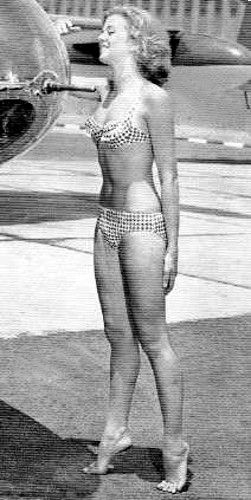
Corinne says: "You will see much
better if keep your perspex clean."

Back Cover of Ndege
End
Extracted and recompiled by Eddy Norris for use on the "Our Rhodesian Heritage" Blog that he administers.
Please note that this magazine concentrated on Flight Safety within the Royal Rhodesian Air Force.
Also please remember that comments are always very welcome. Send
them to orafs11@gmail,com
To view the Blog Home Page - Please Click Here.
(Please visit our previous posts and archives)
To view the Blog Home Page - Please Click Here.
(Please visit our previous posts and archives)
Joe Syslo (RhAF) Writes:-
ReplyDeleteCorinne brings a tear to my eye (the one that is left and works)…not because of her loveliness, but because she is now 65 and looks like me!!!!
Remember, in 1967 I looked like a Greek God…now I look like a Greek…God!!!!!